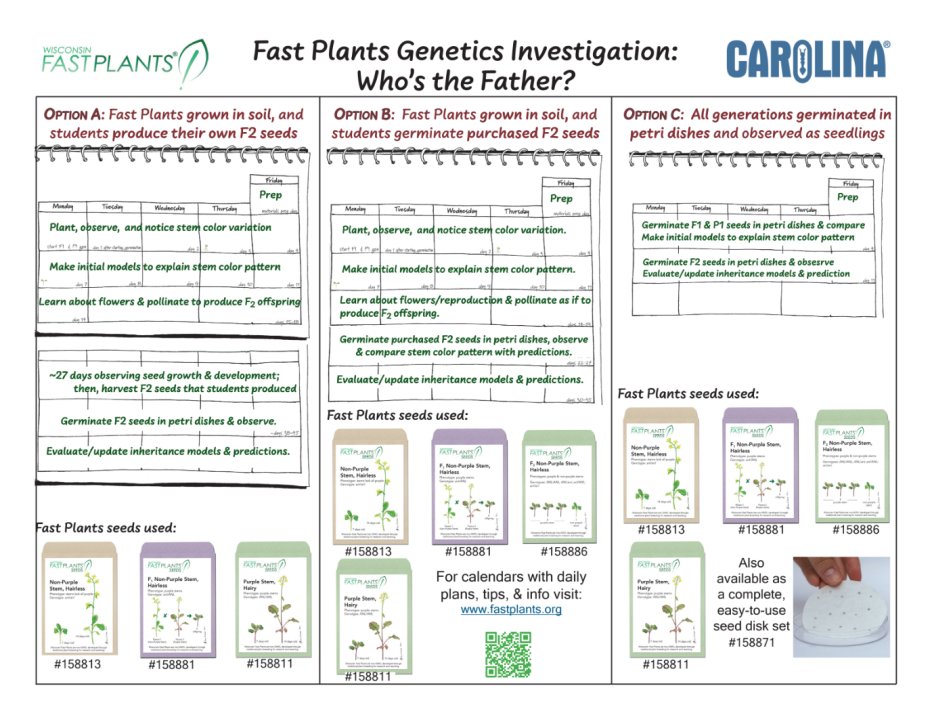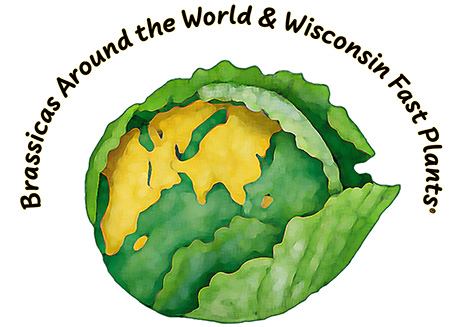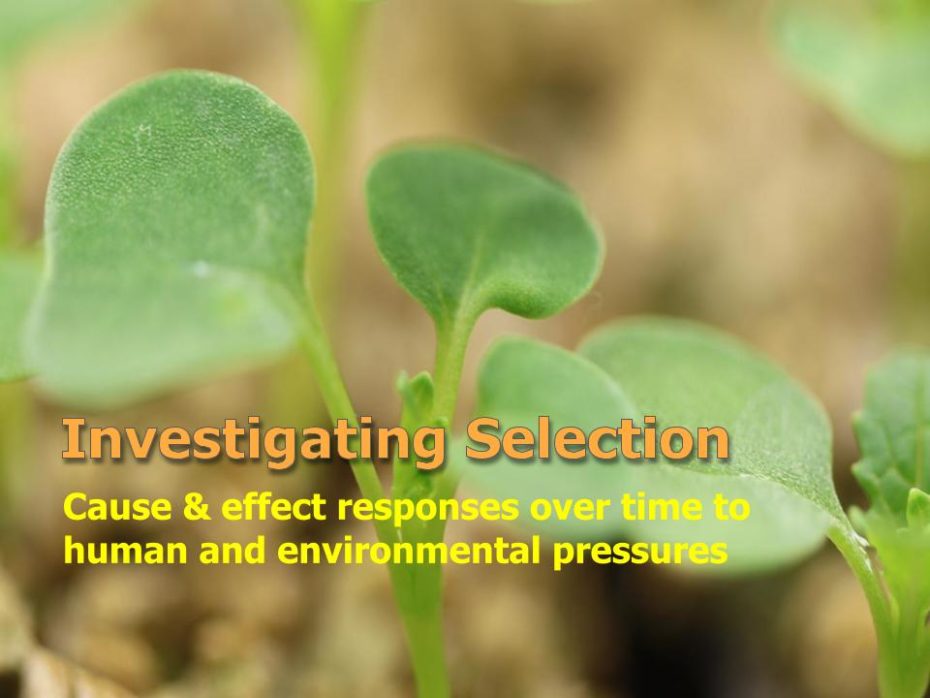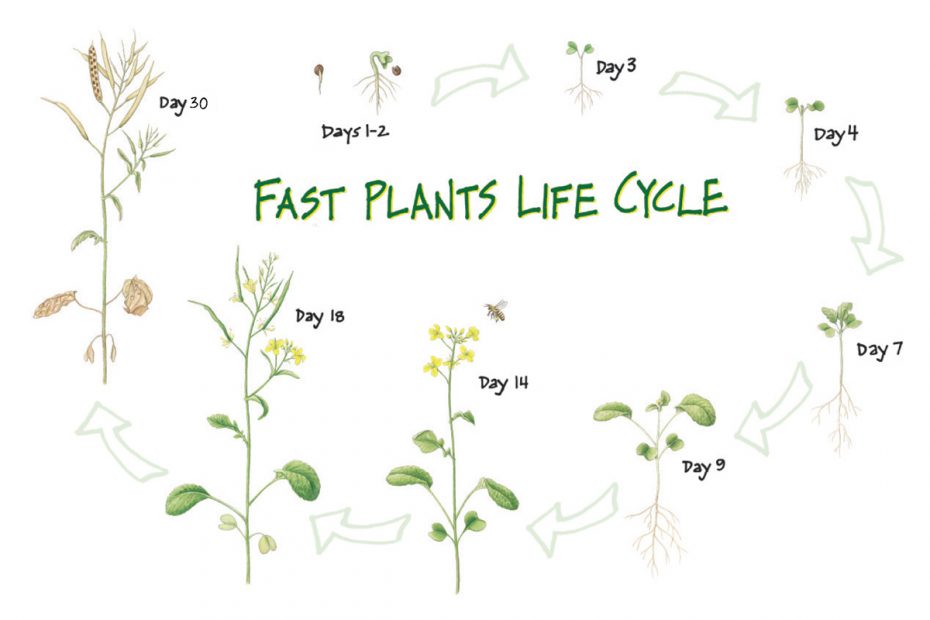Future Depends on Plant Systems careers In the ever-evolving landscape of agriculture and plant sciences, the need for hands-on experiences growing plants has never been more critical. Career Technical Education (CTE) courses in the Plant Systems Pathway are foundational for future professionals in a wide variety of plant science fields, and one valuable addition that stands out is the incorporation …
Fast Plants Conferences 2023 NABT CAST ACTE Booth Resources
It’s the season of professional development conferences for teachers, educators, and our Fast Plants Team! Come visit our booths in the exhibit halls, they’re always packed with living Fast Plants, recommended resources, and good conversation. Jackson is attending NABT in Baltimore; Hedi and Dan are attending CAST in Houston and ACTE in Phoenix! This blog post summarizes what you’ll find …
Teach Inheritance with Fast Plants – Where to start?
Are you just deciding where to start to teach inheritance patterns with Fast Plants? Or maybe you’ve used Fast Plants before and are ready to add complexity to your inheritance investigations. Because we have so many resources available, choosing where to start can be a bit daunting. So, in this post we guide you through the decision making process and link to …
Digital Library of Fast Plants Resources
We are proud to announce a revision and upgrade to our Fast Plants Digital Library! In our more than 35 years serving teachers and researchers, the Wisconsin Fast Plants Program has always been dedicated to creating free, open source resources for using Fast Plants effectively as a model organism. The recently completed upgrade to our library allows us to make …
Dihybrid Inheritance Study Using Wisconsin Fast Plants – Open Source Educator Resources
Blog Post Sections Announcing Dihybrid Inheritance Study Teaching Tool Study and Resource Overview Dihybrid Inheritance versus Monohybrid Inheritance Patterns: Which to Choose? Identifying Traits Rosette-Dwarf and Anthocyaninless (Non-Purple) Study Timeline Learn More and Access Resources Announcing Dihybrid Inheritance Study Teaching Tool The Wisconsin Fast Plants team is proud to announce the release of a set of resources to support teaching …
Investigating Brassicas Around the World with Fast Plants – Open Source Lesson
Blog Post Sections Announcing Brassicas Around the World Lesson Hands-On Fast Plants Experiment Models Brassica Selection Around the World This Investigation is Ideal for… Connecting Science and Culture Relevance of Fast Plants and Brassicas Around the World Announcing Brassicas Around the World Lesson The Wisconsin Fast Plants team is proud to announce a revision and content overhaul to one of …
Ecosystem dynamics investigations
Why hands-on ecosystem investigations? Ecosystems are highly complex systems; how can we support learners to grasp the effects on populations when one component of an ecosystem changes? Using a model ecosystem and model population in a hands-on investigation is an effective teaching strategy. In addition to making abstract ecosystem concepts more concrete, using Fast Plants as a model organism in …
New! Polycots Fast Plants Seed Line: Engaging & versatile for selection experiments
Polycot seedlings are easy to distinguish just a few days after germination! Our new Polycots seed line of Fast Plants features a trait that students can easily see at the seedling stage. In addition, we’ve developed a procedure for producing parental (Generation 1) and offspring (Generation 2) Polycot seed stocks, so it is not necessary for students to produce their own …
My first experience teaching with Fast Plants
Classroom teacher, Julie LaConte, tells about her first experience teaching with Fast Plants in this guest post. Thank you, Julie, for sharing your insights and experiences! Fall 2019 was my first experience teaching with Fast Plants, and plants are one of my least favorite topics to teach. After 18 years as an upper elementary and middle school science teacher, I have had my fair share …
NEW! ExploreLearning releases Wisconsin Fast Plant® simulation Gizmos®
Two Wisconsin Fast Plants® simulation Gizmos® were created as a collaboration between ExploreLearning and the Wisconsin Fast Plants Program. These simulations were designed to support a variety of investigations and growing Fast Plants. AND they replace the simulations created nearly two decades ago that can no longer function on modern operating systems! Simulations complement physically growing Fast Plants Using these Gizmos during or after growing Fast Plants, …
Investigations with Wisconsin Fast Plants lead to powerful learning
Teaching and Learning with Fast Plants Investigations We know it is important to “help students make sense of the natural world by designing and carrying out authentic, student driven investigations (Wingert & Bell, 2015).” Compared to other living organisms, Wisconsin Fast Plants are easy to manage and very responsive to factors in their environment. In addition, many easy-to-observe Fast Plant phenotypes …
Inheritance and Genetics: Observing Variation and Measuring Selection in Fast Plants
Variation is a fundamental attribute of life; understanding its nature is important to all. Wisconsin Fast Plants are an ideal model for teaching this concept, with easily observable variation in many plant traits. This variation can be observed, described, and measured or quantified to gain greater understanding of plant traits. Development of selection experiments allows analysis of recorded data and measuring …
Inheritance and Genetics: Understanding Patterns of Inheritance in Fast Plants
Wisconsin Fast Plants are an ideal model organism for observing and learning about inheritance patterns! Monohybrid and Dihybrid crosses demonstrate Mendelian patterns while other genetic stocks provide opportunity for observing cytoplasmic traits and developing of selection experiments. What inheritance patterns are observable in Fast Plants? Mendelian traits: monohybrid cross this investigation focuses on the genetics of the plant stem color trait Mendelian traits: dihybrid …
Teaching Hands-On Life Science Using Wisconsin Fast Plants
Wisconsin Fast Plants are perfect for teaching life science in the classroom! Initially developed as a research tool at the University of Wisconsin – Madison, Fast Plants have 30+ years of use as a model organism in K-12 education. This post is an introduction to teaching with Fast Plants, with links for easy access to materials that support developing and implementing hands-on life science …
Counting Leaf Hairs on Fast Plants for Selection Experiments
Hairs are not often a trait that we associate with plants. However, of all the traits that students might observe in a population of Fast Plants, we can learn a lot about variation and natural selection by counting and selecting for the number of hairs on a leaf margin. Selective breeding to increase (or decrease) hairiness can provide an excellent opportunity …
Teaching with the Fast Plants life cycle
Life Cycle Investigations Life cycle investigations with Wisconsin Fast Plants® provide rich context for teaching and learning a broad range of concepts. Though some think of the plant life cycle as limited to elementary level lessons, investigations and observations made during the Fast Plants life cycle are used worldwide at middle, high school and college levels, too. Crosscutting Concepts and life cycles Try to …


















